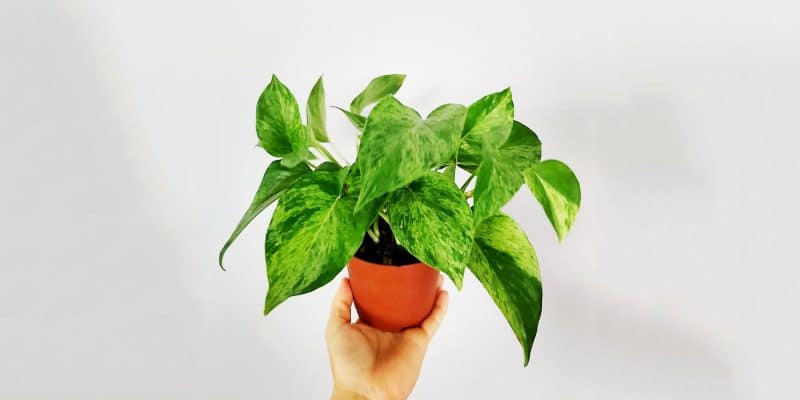When it comes to Jessenia Pothos, think of it as that laid-back buddy who somehow manages to make your space feel warmer and more inviting the moment it walks — or rather, grows — through the door.
Vibrant, heart-shaped leaves and an undemanding nature — everything you could want in a friend? Maybe just in an indoor plant.
Ready to become best buds with this easygoing houseplant? We’ll tell you everything you need to know about Jessenia Pothos care, from its ideal growing conditions, propagation, and how to deal with the most common issues that come up.
Table of Contents
Jessenia Pothos Plant Care Guide
History, Habitat, and Characteristics
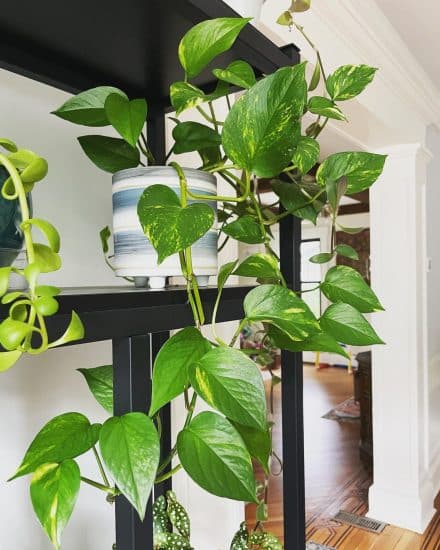
Jessenia Pothos (Epipremnum aureum ‘Jessenia’) boasts a luscious mix of chartreuse, green, and yellow hues on its leaves.
Jessenia Pothos was discovered by Costa Farms as a unique ‘sport’ that they found growing among their Marble Queen Pothos crops. It was then propagated and marketed as a distinct form, since its variegation was different from the original plant.
Although the two pothos varieties are very similar in appearance, its vibrant coloration is what truly sets Jessenia Pothos apart. Compared to its parent plant, the golden pothos, it also grows a bit more slowly and prefers more light.
Fun fact: The variegation of Jessenia Pothos becomes even more pronounced when exposed to brighter indirect light, which enhances the unique blend of chartreuse, green, and yellow colors on the leaves. It’s almost like nature’s way of rewarding our green thumbs . . . with even more green!
How does Jessenia Pothos differ from the Marble Queen Pothos?
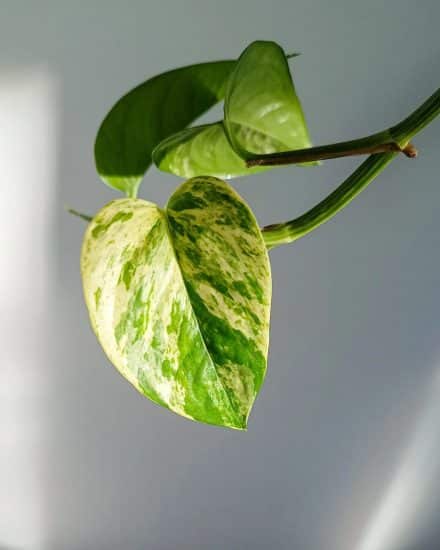
The leaf coloration is the primary identifier. Jessenia Pothos boasts a mix of green, cream, and gold variegation. In contrast, the Marble Queen Pothos has a more classic marble appearance, with white variegation swirling against a dark green background and very minimal gold tones (if any at all).
The distribution of colors is also different. In Jessenia Pothos, you’ll find more evenly dispersed patterns, while the Marble Queen Pothos often showcases larger sections of white variegation, creating more of a patchwork look.
Light
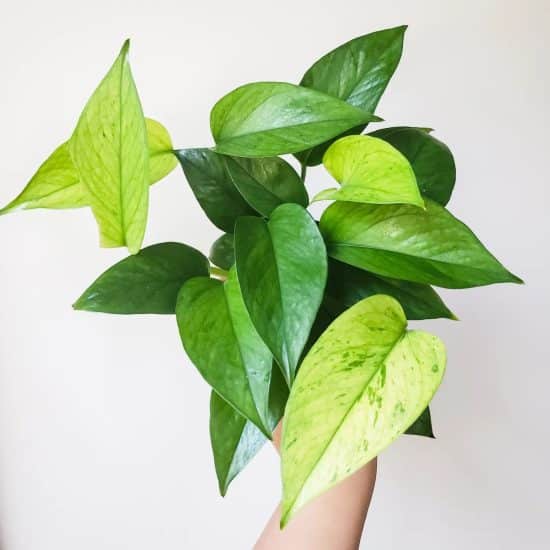
Jessenia Pothos prefers plenty of bright, indirect light to stay vibrant and lush.
If Jessenia Pothos receives too much sunlight, you’ll notice signs like fading colors, browning, or even scorching on its leaves. To remedy this, you’ll want to move the plant to a location with less direct sun or place a sheer curtain between it and the light source. Avoid direct sunlight in the heat of the day, which can lead to leaf burn.
On the flip side, if your Jessenia Pothos isn’t getting enough light, it may lose its distinct variegation, and you might also observe slow, leggy growth as the plant reaches out in search of brighter light. You’ll want to find a spot with more bright, indirect sunlight or add a supplemental grow light.
If you have other pothos plants (like the golden pothos), you’ll need a bit more light to preserve its variegation, but this is generally true of most variegated plants.
Water
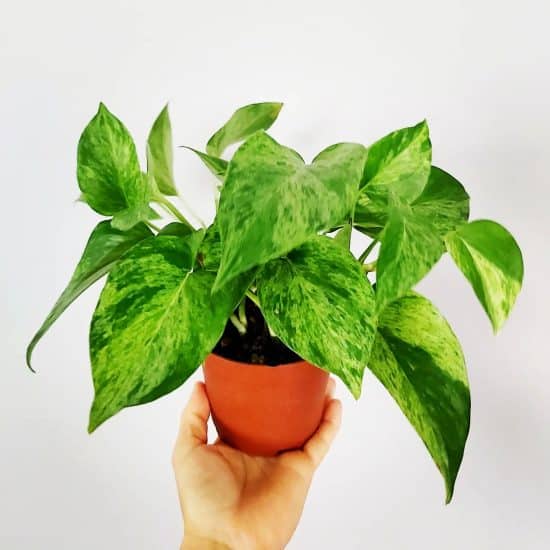
We suggest thoroughly hydrating your Jessenia Pothos twice a week, ensuring the soil is well-saturated each time. Between waterings, give the soil some breathing room by letting it dry out a bit.
Thirsty Jessenia Pothos plants might show a few telltale signs if they’re not receiving enough water. This includes leaves that are wilting or curling, or even turning brown and crispy. If faced with these symptoms, increase the watering frequency and snip off any damaged leaves so your plant can put its energy into healthy new growth.
On the other hand, too much water might leave your pothos downright soggy. Look for yellowing leaves or mushy stems. If you spot these signs, it’s time to cut back on the watering.
Our watering tips:
- Thoroughly hydrate your Jessenia Pothos plant each time you water it, but be sure to check the moisture level first. It should dry out a bit between each watering.
- Avoid keeping it in standing water. If your potted friend is placed inside a decorative planter without drainage holes, remove it from the planter before watering (this will help prevent soil compaction!).
- Keep an eye out for signs of under-watering or over-watering, and be ready to adjust your watering routine if needed.
Temperature and Humidity
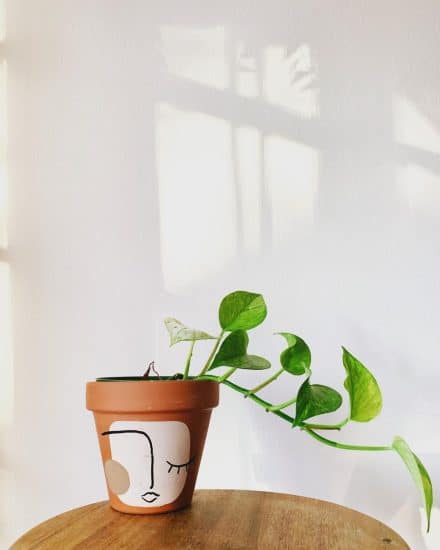
Although Jessenia Pothos is quite forgiving, it’s best to maintain cozy indoor temperatures between 65-85°F (18-30°C) for optimal growth. Avoid placing it where there are very cold drafts or directly above a radiator during the winter months.
Keep an eye out for wilting or drooping leaves (signs of cold stress), and leaf scorching and yellowing (signs of excessive warmth). If you notice any of these symptoms, adjust the temperature and consider moving the plant to a more suitable location.
When it comes to humidity, your Jessenia Pothos isn’t particularly sensitive. However, as a tropical plant, it will grow faster in environments with higher humidity. Aiming for a humidity level of 40-60% will help your plant thrive.
Watch for curling or browning leaf tips (indicating low humidity) or fungal growth and rotting roots (from excessive humidity) to ensure you strike the right balance.
To raise humidity:
- Place a pebble tray beneath the plant to create a humid microclimate.
- Group your Jessenia Pothos plant with other humidity-loving plants to increase the area’s overall moisture level.
- Use a room humidifier to optimize humidity levels.
Soil and Planting
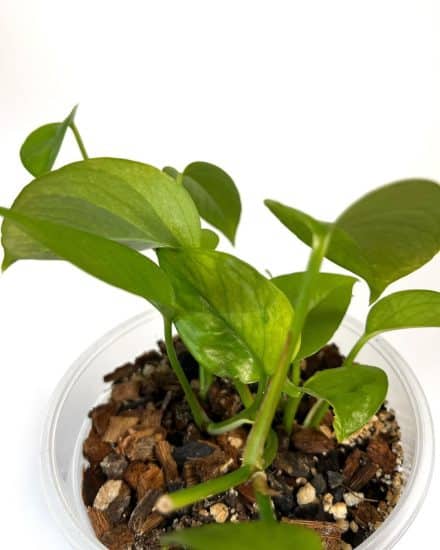
Jessenia Pothos flourishes in a well-draining potting soil that retains some moisture. Achieving the right balance of aeration and nutrient retention is key to keeping this plant healthy.
An ideal soil mixture for your Jessenia Pothos plant starts with potting soil, but you should also add pumice or perlite to promote better drainage, which helps avoid issues like root rot. Peat moss or coco peat can be mixed in to help retain moisture and keep your plant from drying out too quickly.
Fertilizer
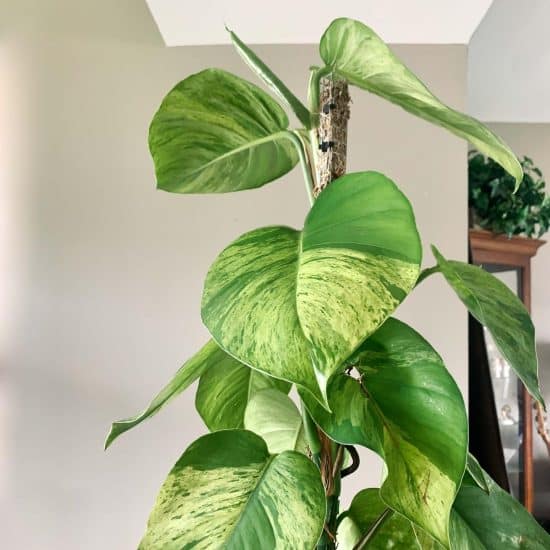
When it comes to fertilizing your Jessenia Pothos, there’s no need to focus on a specific type — a general-purpose fertilizer will do. Make sure to apply it regularly throughout the growing season (basically whenever your plant is actively growing, usually in spring and summer). Simply follow the mixing directions on the fertilizer’s packaging.
Keep an eye out for over-fertilizing, which can cause issues like yellowing leaves, stunted growth, or burnt leaf edges. If you notice any of these signs, flush the soil with water to remove excess fertilizer salts.
Propagation
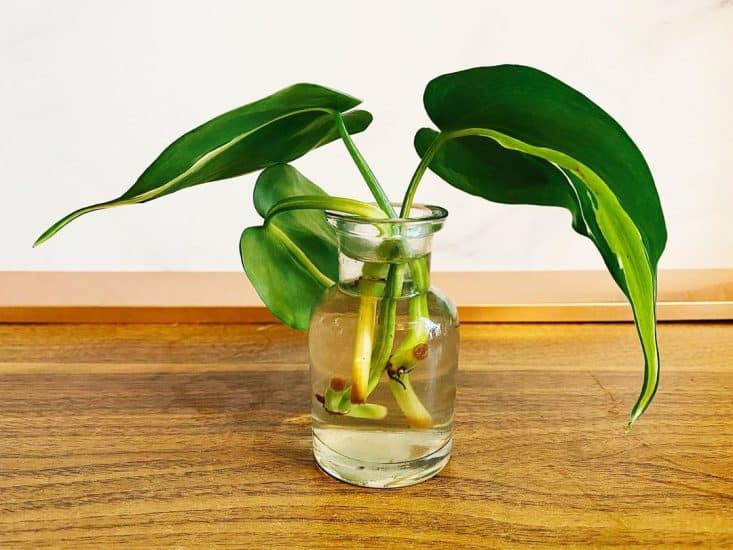
We’ll go through propagation methods for Jessenia Pothos: water propagation and soil propagation. Choose the one that works best for you, based on what you’ve got on hand and what you’re most comfortable with.
(If you like watching those little roots grow, water is the way to go!).
Propagating Jessenia Pothos stem cuttings in water:
- Pick a healthy stem with at least three leaves. Grab your sterilized scissors and snip the stem right below a node.
- Gently remove the bottom leaves of the stem cutting to prevent them from rotting in the water. Be sure to keep at least two healthy leaves on top.
- Fill a bottle or jar with tap water and place the roots into it. Just make sure the leaves don’t touch the water. Find a bright spot for your cutting to chill in.
- Refresh the water every week to keep the oxygen levels up and top up any evaporated water.
- Patience is key. Once those roots hit about 2 inches long, it’s time to transfer the cutting to a pot filled with a well-draining potting soil.
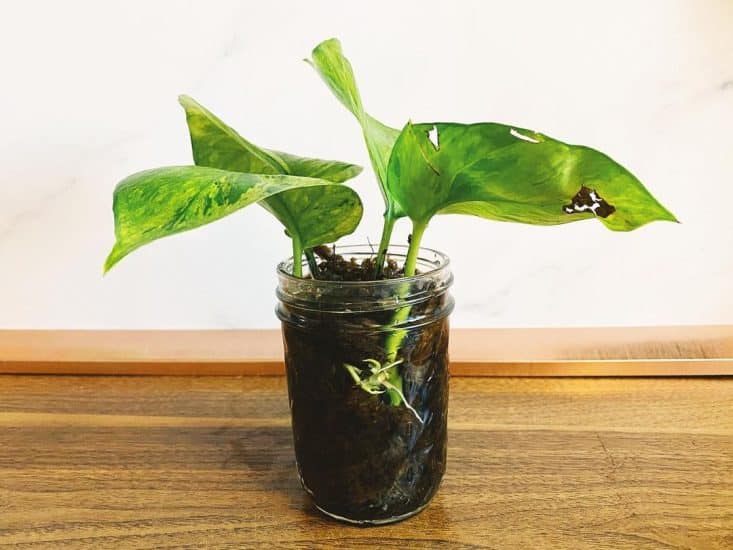
Propagating Jessenia pothos stem cuttings in soil:
- Find a healthy stem that has at least three leaves. Using sterilized scissors, make a cut right below a node for the best rooting results.
- Remove the bottom leaves from the stem cutting but leave at least two leaves up top.
- Pop the cutting directly into moist soil, either in a separate pot or next to the mother plant for a fuller look. Just be sure to cover the roots with a well-draining potting soil.
- Keep the soil constantly moist for the first month. After that, let the soil dry out a bit between waterings.
- Keep an eye on your cutting’s progress. You won’t be able to see the roots growing in the soil, so watch the overall health and growth of the baby pothos plants.
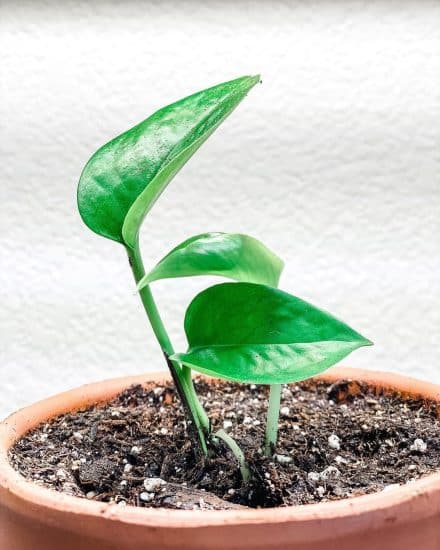
Common Issues
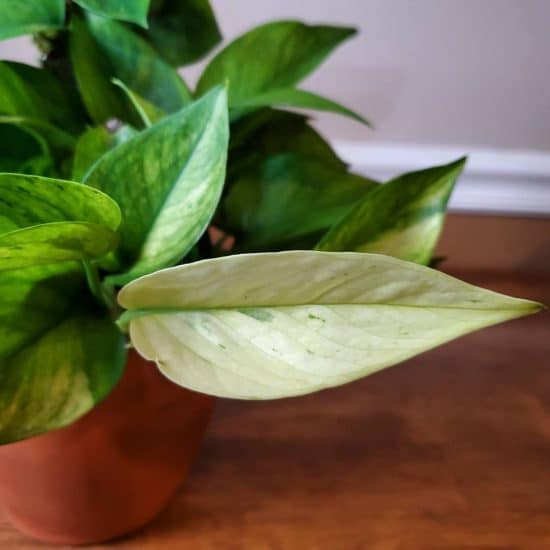
Although Jessenia Pothos has a reputation for being low-maintenance, this plant can still encounter some issues along the way.
Root-bound
Becoming root-bound is a typical problem for Jessenia Pothos and other pothos plants like the golden pothos. This occurs when the plant’s roots grow extensively and circle the pot, restricting its growth. To identify this issue, check for roots emerging from the drainage holes or visibly coiling inside the pot when you remove the plant.
To remedy this situation, simply repot your Jessenia Pothos plant into a larger container with a well-draining soil mix, giving the roots more room to expand. This will help the plant flourish, and don’t worry if you notice your Jessenia Pothos releasing small droplets of water from its leaves or bleeding from its vines after pruning — this is a normal response and won’t harm the plant.
Yellowing Leaves
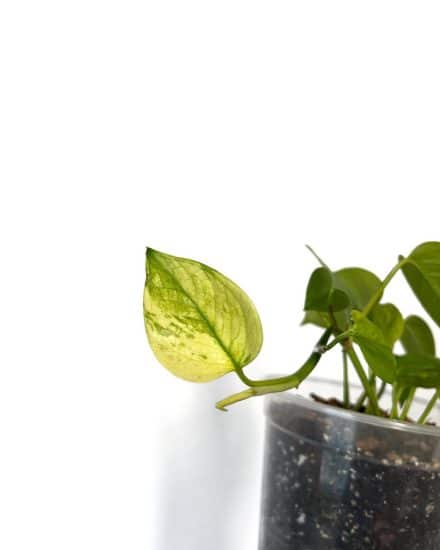
When leaves start to yellow, it can signal a few potential problems with your Jessenia Pothos, like overwatering, insufficient nutrients, or inadequate sunlight. To pinpoint the cause, first, evaluate the plant’s watering routine to ensure you’re not overdoing it. Remember that the soil should be slightly dry between waterings.
If you’ve ruled out overwatering as the issue, try moving your pothos to a spot with more indirect sunlight or fertilizing it more regularly during the growing season.
Pests and Diseases
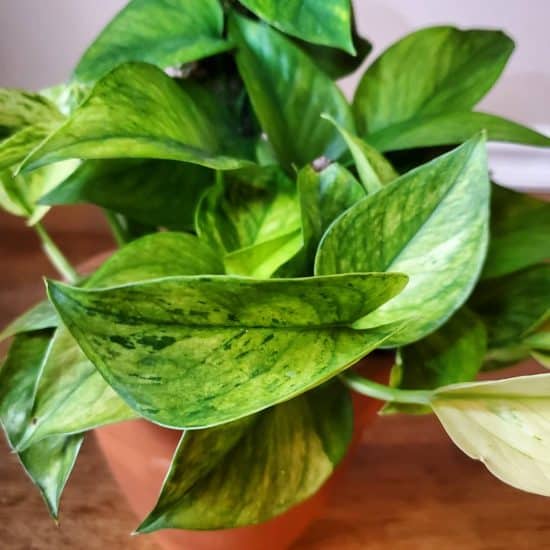
Mealybugs and Spider Mites
Mealybugs are the most common pests that might bother your Jessenia Pothos. They’re easy to spot (think small, furry cotton balls). Spider mites can show up from time to time as well. If you see any of these little intruders, you’ve got options!
You can pick them off by hand or use neem oil (a natural, eco-friendly pesticide). Follow the neem oil’s instructions — one or two applications should do the trick. If neem oil isn’t your thing, mix some water and liquid soap to make a spray that’ll also help treat those pesky pests.
Root Rot
Your Jessenia Pothos plant might develop a rot issue if it’s left standing in water. You can check if root rot is a problem by removing the plant from its pot and taking a look for darker brown, mushy roots. Brown spots on the leaves could signal this issue, too.
To prevent rot, avoid soggy soil and wait for the well-draining soil mix to dry between waterings. Easy, right?
But if root rot does happen, it’s time for action! Remove your pothos from its pot and trim away any mushy, discolored roots (make sure to sterilize your scissors or pruning shears before and after). Then, repot it in fresh, well-draining soil, and, of course, choose a pot with good drainage holes to avoid future issues.
Conclusion
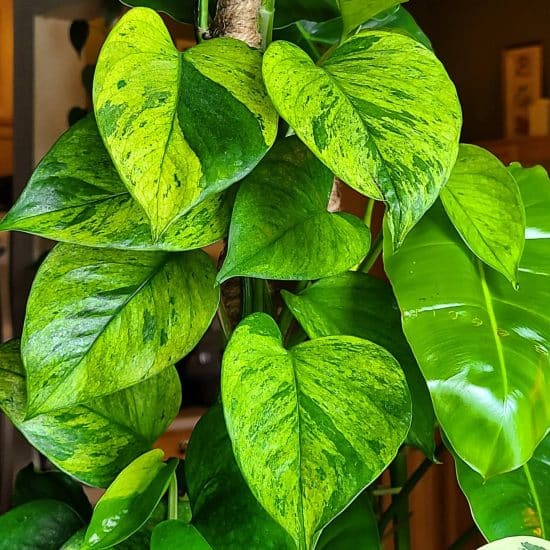
That’s a wrap on our Jessenia Pothos care guide! We hope you now feel well-equipped to nurture and care for this stunning, low-maintenance houseplant.
Care for Jessenia Pothos is pretty similar to other pothos plants, but compared to a less variegated pothos (looking at you, golden pothos) it does require a bit more light.
Jessenia Pothos care summary:
- Provide bright, indirect light to maintain the vibrant variegation, but avoid direct sunlight.
- Water your Jessenia plant thoroughly, but wait for the soil to dry out a bit between waterings.
- Maintain indoor temperatures between 65-85°F (18-30°C) and aim for 40-60% humidity.
- Use a well-draining, nutrient-rich potting soil, and fertilize occasionally during the growing season.
- Propagate through stem cuttings, either in water or soil, for new plants.
- Monitor your plant for common issues like pests, root rot, and yellowing leaves, and address any issues promptly.
If you found this guide helpful, consider sharing it with fellow plant lovers or on social media. And, as always, feel free to reach out to us with any questions or concerns you may have (or plant pics!).
Take care, and happy growing!
FAQ
Is Jessenia pothos rare?
Jessenia pothos used to be known as the “rarest pothos,” but supply has increased pretty steadily. Don’t let the idea of rarity hold you back, though – Jessenia pothos might be harder to find than some other types, but with a bit of searching (especially at specialty nurseries or online plant retailers), you should be able to locate one.
Is Jessenia pothos toxic?
Jessenia Pothos is considered to be toxic to pets and humans when ingested. Specifically, the plant contains calcium oxalate crystals.
To keep curious pets and young children safe around your Jessenia Pothos, place it somewhere out of reach, like up high on shelves or in hanging baskets.
Is Jessenia pothos related to golden pothos?
Yes, very much so, hence Epipremnum aureum ‘Jessenia’ pothos. They’re well known for their lush, trailing foliage. While they share similarities in their care requirements and growth habits, they differ in appearance.
Jessenia Pothos features vibrant green and lime-colored leaves. Golden pothos has the same heart-shaped leaves, but are adorned with yellow marbling, a lovely combination of green and gold.
How can you tell the difference between Jade pothos and Jessenia pothos?
While both Jade Pothos and Jessenia Pothos plants are beautiful pothos, their leaf patterns and colors make it easy to distinguish between the two. Keep an eye out for the following distinguishing characteristics:
Jade Pothos is known for its solid, deep green heart-shaped leaves with a glossy finish. It lacks any marbling or variegation, which gives it a simple and elegant appearance.
Jessenia Pothos features a beautiful blend of green and lime hues on its leaves. The variegated pattern typically consists of a deep green base with lighter, almost yellow patches scattered throughout the leaf surface, creating a vibrant and eye-catching display.
Does Jessenia Pothos vine?
Yes, it does vine, and it does quite well in a hanging basket, just like most pothos varieties. Jessenia Pothos is an excellent choice for hanging baskets because its trailing vines look beautiful draping over the edges. It can also be easily trained to climb or be wrapped around various supports.

